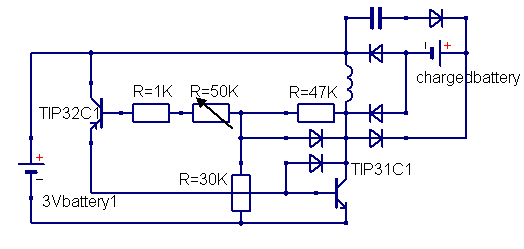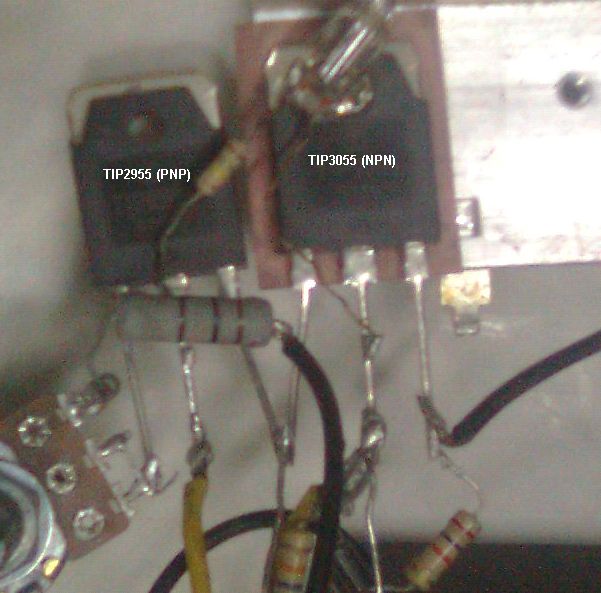
Solar panel are designed to work only during sunny day. But they may not work at all during cloudy day or at night. They still produce power, but the voltage is not high enough to efficiently charge a battery. They can only produce power at a fifth of rated power according to this source:
A Note On Solar PV in Diffuse (Cloudy) Daylight
The link also mention the use of mirror to increase the power of solar panel during cloudy day.
The researcher already know this and design the solar panel to produce output 50% higher than required:
What is a solar charge controller?
Why 12 Volt Panels are 17 Volts?
The obvious question then comes up – “why aren’t panels just made to put out 12 volts”. The reason is that if you do that, the panels will provide power only when cool, under perfect conditions, and full sun. This is not something you can count on in most places. The panels need to provide some extra voltage so that when the sun is low in the sky, or you have heavy haze, cloud cover, or high temperatures*, you still get some output from the panel. A fully charged battery is around 12.7 volts at rest (around 13.6 under charge), so the panel has to put out at least that much under worst case conditions.
*Contrary to intuition, solar panels work best at cooler temperatures. Roughly, a panel rated at 100 watts at room temperature will be an 83 watt panel at 110 degrees.
Because the solar panel produce higher voltage than the battery, a charge controller is needed. Charge Controller work as:
The charge controller regulates this 16 to 20 volts output of the panel down to what the battery needs at the time. This voltage will vary from about 10.5 to 14.6, depending on the state of charge of the battery, the type of battery, in what mode the controller is in, and temperature. (see complete info on battery voltages in our battery section).
On another site, JUTA Solar Controller Regulators:
1. Generally keep the battery on full voltage condition.
2. Prevent the battery from over-charging.
3. Prevent the battery from over-discharging.
4. Prevent the battery from supplying power to solar panels during nights.
One thing missing from mentioned functionality, a way to increase the solar voltage when the condition is not ideal. I consider this strange because:
1. People rarely get ideal condition today. Sun and blue sky had become rare.
2. This technology already exist (Buck/Boost)
3. Solar regulator is expensive but do not contain an automatic voltage regulator that is already standard in current electronic appliance (switching power supply).
To illustrate how simple it is, here is what I would use:

I call the above circuit stingo. The circuit will work with input voltage from 1.5V to 15V (depend on transistor). And can charge battery from 1.5V to 24V. The output will self adjusting to the battery voltage automatically. The complicated output rectifier is needed to make the battery receive the circuit output better. Note that this circuit meant for output up to 1 Amp only.
Here is how to wire the transistor. The picture use different transistor. TIP3055 replace TIP31C, TIP2955 replace TIP32C:

A better transistor would be MJL21194 to replace TIP31C, MJL21193 to replace TIP32C.
Lets hope solar regulator manufacturer will realize that people need solar panel that will still work even during cloudy day. A situation that unfortunately now is common for most people. With the addition of circuit like mentioned above, the solar panel will work most of the time even at night.
Interestingly, some people mention that solar output increase during hazy day:
Sunny Days vrs Hazy days
However, the opposite also reported:
http://www.realityzone.com/20120706.html
“I live in what is loosely referred to as high mountain desert, elevation some 7500 feet. My off-grid solar was state of the art ten years ago and has been continually upgraded since the initial install. I have tracked amp-hour output religiously all this time and I can testify that overall daily output has been reduced some 20% over the last four years as observed chemtrail activity has incrementally increased during the same four year period. And this is not a result of PV panel degradation. (PV panels over a 20 year period can be expected to degrade 20%)”
One possible explanation for this is more efficient output because of less heat from direct sunlight.

This design is wicked! You certainly know how to keep a
reader entertained. Between your wit and your videos, I was
almost moved to start my own blog (well, almost…HaHa!) Wonderful job.
I really enjoyed what you had to say, and more than that, how you presented it.
Too cool!
Also visit my page: web site – Candelaria
–
WOW !!!
That was much much more info than i ever expected! — I am most-grateful & appreciate it a great-deal for the time you have taken to reply & for the sheer strength of your answer!
Apologies i haven’t replied sooner !
i have asked so many questions over the last 10 months regarding similar types of circuit from other websites & had NO LUCK until now! Your the 1st to give an in-depth & detailed answer!
As i have only just started learning electronics this year, i have made a few prototype circuits already, a few PCB’s too but i have a need to first make this circuit you have here on a much smaller scale so i can fully understand it, eventually i will need it to charge a battery-bank that will power all my house appliances during the night, until the morning when the house’s solar panels will once again charge up the battery-bank!
But first, would it be possible for me to make this into a smaller scale, say, to charge up a battery bank of 16 Rechargeable AA Batteries (3800mAh rating, Ni-MH), 22.4v @ Full Charge (assuming 1.4v per single cell)….
i have Eight 3v solar panels – 24v in total but i have ordered a further Eight 3v solar panels and they should be here in another 3 weeks (ordered from China!) !
& Yes – i am still looking for a suitable battery discharge/over-charge protection circuit but still coming up with nothing. I have found many protection circuits for the Li-ion batteries, but cant fing ANY schematics to try to reverse-engineer one of these circuits so it will suit my 1.4v Rechargeable AA batteries. If i could only understand what components are needed to ‘tailor-make’ a protection circuit that i could add to each of my 16 AA batteries to stop them discharging & to stop them over-charging then i’d be most grateful if you happen to know anywhere i can read-up about how to make a such a circuit !!!
Here is an example of a protection circuit for a 3.7v Li-ion single-cell that i have been trying to find schematics for:
http://cgi.ebay.co.uk/ws/eBayISAPI.dll?ViewItem&item=160775359827
All-in-all, i need the solar cells to recharge the 16 AA Batteries (all in series) and when the charging reaches full capacity i would ideally like the circuit to auto-switch-off (i dont mind haveing to make however many circuits it takes to let me accomplish this – as i have been looking for circuits to do this for almost a year now!)
Many thanks in advance for your help once again & thank you immensely for the extremely speedy response !!!
😉
If I remember correctly, a standard solar charger (15V?) said to have 3V at night. What is your solar cell output at night?
See if this link can help you:
http://www.solarbotics.net/library/circuits/se_t3.html
http://www.energeticforum.com/renewable-energy/1664-battery-sensing-switching-bedini-systems.html
http://electronicdesign.com/Articles/ArticleID/1823/1823.html
http://www.electronicsforu.com/efylinux/circuit/mar2003/cir4-lead-acid.pdf
There are many circuit at the first link.
However, knowing when to stop charging can be hard. This charger will show fast voltage increase for the first few minutes when the battery still empty. It will then reduce when the battery start to accept the charge. This can trigger false alarm.
There is other problem with voltage based shut off. The charging voltage can vary. I use one circuit with 12V input. I currently charge a single 2500mAh NiMH and the voltage reading show 1.99V. With low power charging, the voltage reading is 1.70V. Right after I shut the charger off it read 1.40V. Only when the charger is off, the voltage show correctly.
Using temperature based shut off may not be practical. This charger do not heat the battery as much as usual charger. The battery I currently charge is only as warm as my body even with that high charging voltage. When you get it as hot as iron, then you are way over charging.
If you use timer, to fully charge two nimh in series (3V) with 200mA measured charger output, I think one hour is sufficient. Two hours definitely overcharge but I often forget it already past 5 hours………
Since you use solar, voltage sensing may be better. But you must do it while the charger off. Voltage during charging can vary a lot with solar cel.
Like this:
– Charging
– let it run for few minutes, stop the charger, monitor the voltage.
– if it is still bellow 1.35V, repeat the charging. If it reach 1.35V, stop.
1.35V is only an example because charged voltage can change the longer you use this charger. If you use hand, stop the charging when you felt the nimh become warm.
Since it is a bad practice to charge and discharge at the same time, the monitoring / charge controller circuit should not use the charged battery current.
BTW, I forgot to mention that this circuit is dangerous to be used for Lithium battery. Because this circuit will charge at higher voltage than normal, this will produce more gas / bubbling in battery, especially nearing fully charged condition. For lithium, this is dangerous. This also make this charger less favorable for gel battery too.
I use this charger for nimh and nicd for few years and it give a better charge than any other charger. Longer life maybe because it do not heat the battery as much.
I am very very grateful for you in-depth & EXTREMELY informative answer in helping me to create a solar charger system circuit, for small scale ni-mh batteries – AA type, i truly appreciate your help here as i said befor, i have posted on a GREAT-MANY websites seeking help and have been IGNORED completely from a range of over 10 websites.
You have given me alot of info that i have already bookmarked and also in the process of compiling mostly all of it into a word document for offline reading!
I think words are very USELESS in telling you exactly how grateful i am, Thank You so much, it brings my understanding of a solar system much closer to my ultimate goal, which will be to totally cut myself off from the power-grid and live on free electricity via solar cells charging a home-battery-bank during the day and switch to battery power during the night!
At the moment i have a lot of reading and studying of these website you have so kindly helped me out with, once again i am eternally grateful for your help !!
A Major-Thank-You sucahyo !!!!
😉
Thank you. Good luck.
If you succeed please share your experience :).
BTW, there is a product that claim to use similar way of charging caled “Tesla Solar Tracker”. I don’t know the detail though. The claim of less sulfation and charging during cloudy days are common feature of radiant charger.
Hello & Good day to you sucahyo,
I am a very Strong Believer of free information for the benefit of everyone, when i do succeed – i will definitely post my results and the entire project here on this website mainly because this is where i have found the greatest help, especially from you!
Rest assured that i will be sharing all that i make, and i have got plans for a solar tracker circuit too, but i am severely disabled and progress is very slow!
Once again i thanks you so much for the Great Help !!!
Have a Great Day !
😉
Ok. I am happy to know that.
For solar tracker, if you don’t already have it already:
http://www.allaboutcircuits.com/worksheets/opamp2.html
http://powersupplycircuit.net/solar-tracker.html
Good luck.
Hello & Good day to you,
I have finally found EXACTLY what ive been looking-for !!!
It has taken me 10 MONTHS to find this circuit!
Please please PLEASE could you help me just a little more!
Please could you tell me just 2 things:
1. What Diodes have you used in this circuit ?
2. What Voltage Capacitor & What uF Rating Should it Be ?
Many thanks in advance, i can easily source the parts needed but i dont know what the specs of the two mentioned components are that i will also need to buy, please help as soon as you are able to & thank you so much for taking the time to put this circuit online for us all !
Someone from our team will get back to you later this evening, your question has been forwarded to him. Thanks for the inquiry, and hold tight@
Many many thanks!
I am truly grateful for the assistance, i have been searching for this perfect circuit for a long long-time !!!
Hello offtherails2010,
The circuit I post above is just an alternative. There are many other variation. It is commonly called buck and boost circuit. In “free energy” community, there are also radiant charger, joule thief, etc. This circuit advantage is this input current reduce with load with higher resistance. Efficiency is about twice of joule thief circuit.
The wavvy wire in diagram represent coil. It is better to use ferrite toroid as core. I usually end up with coil with 1 ohm resistance. At this resistance, the output is about 200mA at 12V. This also depend on the potentiometer value. You can also try to use choke as the coil and see what happen.
I think you can push the circuit to produce higher output with coil that has less resistance, but you will need to use better transistor, like MJL21193 & MJL21194. They would be very hot that may require active cooling, not just heat sink.
The diode on the right of the coil in diagram must have at least 4 ampere rating. The diode at the left side of the coil can be anything.
The capacitor need to be high voltage one. At least twice of charged battery voltage. I use 1uF/250V.
If you have solar cell with high power output, and you need to charge battery with high capacity, to utilize all the power provided by the solar cell you may need to build more than one circuit and use it in parallel.
Working circuit will consume zero amp if you short the output. You will hear the coil produce high frequency tone during charging.
Do not run the circuit without load. The circuit have the worst input current without load. The transistor will work at its hardest and may break by overheating.
Do not connect / disconnect the output if the circuit is running. This circuit can produce up to 1000V output voltage at 12V input without load. The spark/voltage can destroy any electronics connected to the circuit.
Remember that you still need additional circuit to stop the circuit once the battery reach fully charged condition. Do not overcharge your battery. Since this circuit use coil collapse current, the charging voltage can be higher than usual.